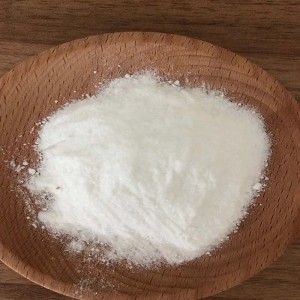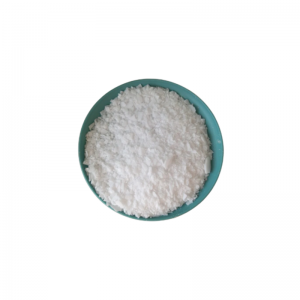
products
National Defense and Scientific Research Departments CAS 10043- 35-3 Fine Powder 99.2%-99.7% Boric Acid
Product detail
MF: BH3O3
MW: 61.83
CAS: 10043-35-3
1.Boric acid is a crystalline compound formed by dissolving boron trioxide in water. It is an inorganic acid, mainly including tetraboric acid H2B4O7 (also known as pyroboric acid), metaboric acid (HBO2) n and orthoboric acid H3BO3 (also known as orthoboric acid). Among them, orthoboric acid has the most stable water content. Orthoboric acid, also referred to as boric acid for short, is white powdery crystal or triaxial chemicalbook scaly junction crystal with luster. It has a slight bitter taste. It feels greasy in contact with skin. It is odorless and soluble in water, ethanol, glycerin, ethers and essence. The aqueous solution is weakly acidic. Orthoboric acid is gradually dehydrated to metaboric acid when heated to 70-100 ℃, pyroboric acid when heated to 150 ℃ -160 ℃, and boric anhydride (B2O3) when heated to 300 ℃.
2.The aqueous solution is weakly acidic, which is a typical Lewis acid. In the presence of hydrochloric acid, citric acid or tartaric acid, it can promote the solubility in water. Therefore, it can be purified by recrystallization.
3.Generally, boric acid is not toxic. The lethal dose of adults is about 15 ~ 20 grams per kilogram of body weight, while that of children is 3 ~ 6 grams per kilogram of body weight. A large amount of absorption may lead to acute poisoning. The early symptoms are vomiting, diarrhea, skin rash, and the central nervous system is excited first and then inhibited. Severe circulatory failure or shock, usually in 3 to 5 days of death. Repeated consumption of small doses will accumulate in the body, leading to chronic poisoning, anorexia, fatigue, insanity, dermatitis, baldness, and menstrual disorders.
Application
1.Boric acid is mainly used in glass products, especially in heat-resistant and chemical resistant glass products. Boron carbide made of boric acid can be used as an abrasive. In addition, it can be used in enamel, ceramic glaze medicine, inorganic pigments, fertilizers and metallurgical production.
2.It is widely used in the glass industry (optical glass, acid resistant glass, heat-resistant glass, glass fiber for insulating materials), which can improve the heat resistance and transparency of glass products, improve the mechanical strength, and shorten the melting time. In the enamel and ceramic industry, it is used to enhance the gloss and fastness of enamel products, and it is also one of the ingredients of glaze medicine and pigments. As additives and cosolvent in metallurgical industry, boron steel in particular has high hardness and good rolling ductility, which can replace nickel steel. Boric acid has corrosion resistance and can be used as a chemical Book preservative, such as wood corrosion prevention. It is used in metal welding, leather, photography and other industries, as well as the manufacturing of dyes, heat-resistant and fireproof fabrics, artificial gemstones, capacitors and cosmetics.
3. It can also be used as insecticide and catalyst. Boron containing trace element fertilizers in agriculture are effective for many crops and can improve crop quality and yield. Boric acid is also one of the basic raw materials for the production of other borides. The boron compounds produced by boric acid are widely used in national defense and other industrial departments and scientific research institutions.
















